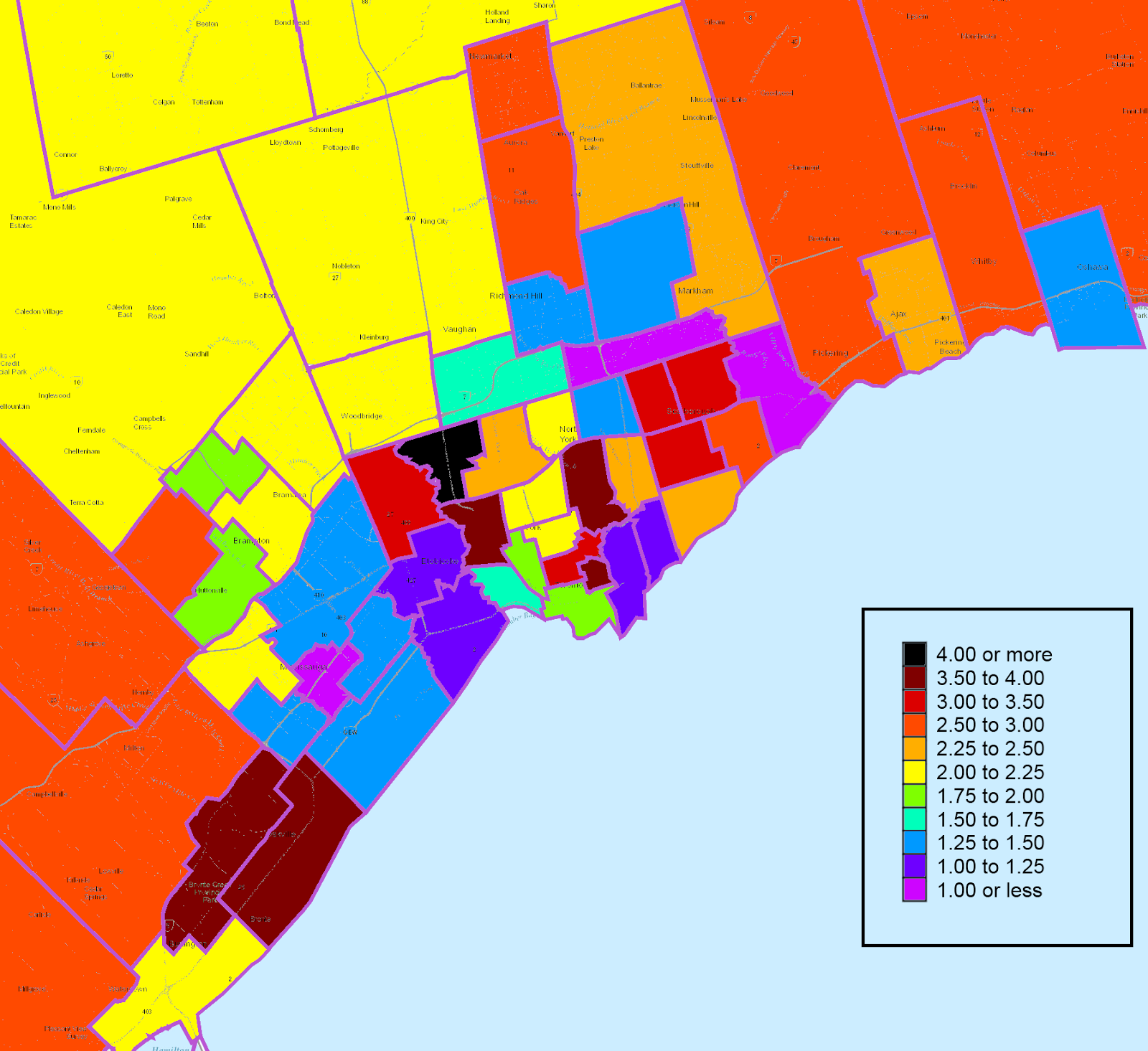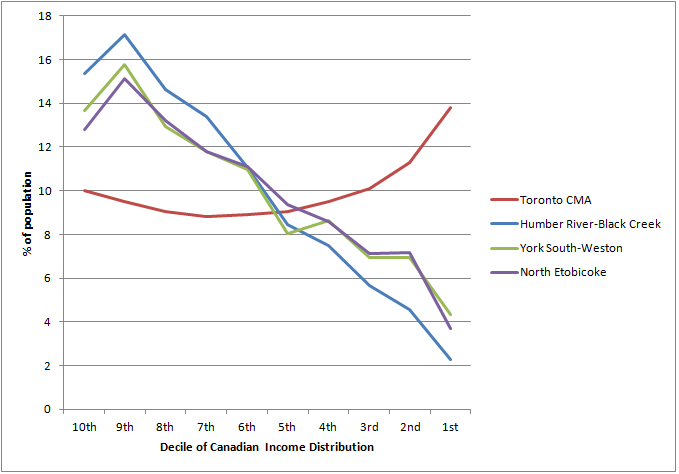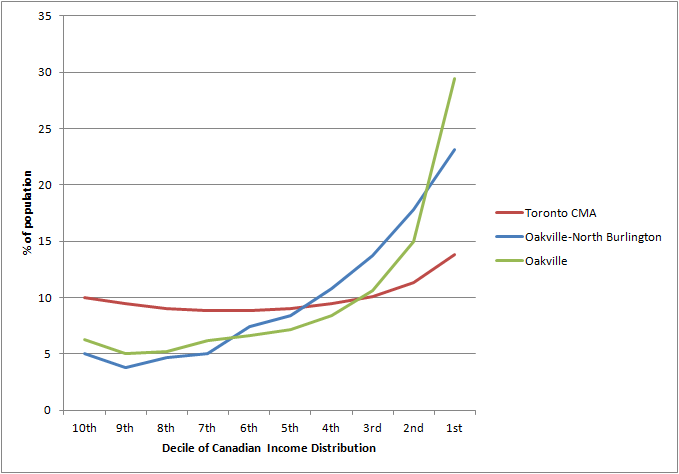Income polarization is an issue, in Toronto and in North America as a whole. I don't think that the Three Cities study proves its case that we're moving toward a neighbourhood model where wealthy people and poor people live far a part. That certainly exists in the United States, where you can go for kilometres and find only poor people in some areas. In Toronto, I just don't see it. Downtown isn't as much of an immigrant reception area as it used to be, and many poorer new immigrants are going straight to the old 416 suburbs. That doesn't mean that there aren't low-income neighbourhoods downtown--and not just social housing. Even more importantly, the inner suburbs are striking for just how closely low-income and higher-income people co-exist. There are countless examples of troubled tower blocks and social housing built right next to $500,000+ single-family homes with two car garages. Take a trip out to Malvern and you will see that most of the neighbourhood's housing is very comfortably middle class. Even Jane and Finch is surrounded by many middle-class residential neighbourhoods. These things just don't necessarily show up at the census tract level, and that's why the Three Cities maps often show areas with $800,000 houses on ravine lots as low-income areas.








